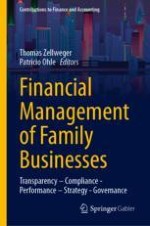Financial management in family businesses is a special challenge. CFOs in particular are often at the crossroads of various interests and roles. However, not least the public reticence of family businesses has so far ensured that there is a lack of knowledge about these interrelationships. A specialist circle of CFOs from large German-speaking family businesses is dedicated at the Center for Family Business at the University of St.Gallen (Switzerland) to discuss these issues . In this book, these experts share their wealth of knowledge and experience with the public for the first time. Along a five-step model, they shed light on key areas of responsibility that go far beyond mere financial management. They discuss issues of transparency and compliance, from performance and strategy to governance - and provide concrete suggestions for everyday business life. Whether manager, owner, or advisory board member, anyone who bears responsibility in a family business can benefit from this bridge between theory and practice.The CFO network fbxperts.ch has also been present internationally since 3 years: in Italy, Spain, France, UK and other locations.
